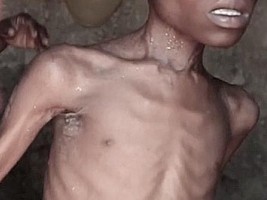|
||||||||||||||||||
|
|
Haiti - Crisis : More than 18% of the population at risk of very high malnutrition 28/10/2022 10:08:06
18% of the population analyzed (about 1.8 million people) is classified in IPC Phase 4 (Emergency) and 29% (about 2.9 million people) in IPC Phase 3 (Crisis), i.e. about 48% of the population in need of urgent action. Of the 32 areas analyzed, fifteen are in Phase 4 (Emergency). These are mainly the areas of the Great South affected by the August 2021 earthquake, the high plateau and its extensions in the North, North-East and Artibonite, North-West, Gonâve, as well as three municipalities of the metropolitan area most affected by the activities of armed gangs. Among the main causes, the numerous episodes of "peyi lok" have had a significant impact on tourism and have led to the closure of many hotel establishments. These episodes of blockage in the country and the unpredictable security situation are slowing down ongoing investments, particularly those of the private sector as well as small businesses, which are the main source of income for a good part of the population. Gang violence has reached unprecedented levels in the metropolitan area limiting the movement of goods and people. This violence has pushed more than 20,000 people to flee their homes. Barricades have been erected across the streets of major cities across the country and travel is difficult, limiting access to food and water as well as fuel. This situation has forced the cessation of many humanitarian activities, the needs of the Haitian population are worsening and the living conditions of the most vulnerable are deteriorating, particularly in Port-au-Prince. As of August 31, 2022, only 688,150 people among the analyzed population received emergency food assistance in the form of a ration or cash transfer, i.e. 7% of the analyzed population. Overview of the projected situation For the period from March to June 2023, for which no humanitarian food assistance has been confirmed, the people estimated to be in disaster are 19,200. In addition, 17% of the population analyzed (approximately 1.65 million people) are in IPC phase 4 (Emergency) and 30% (approximately 3 million people) in IPC phase 3 (Crisis), i.e. 48% of the population in need of urgent action for the projection period. Learn more about the Integrated Food Security Phase Classification (IPC) : Phase 1 : Usually adequate and stable food access with moderate to low risk of sliding into Phase 3, 4, or 5. Phase 2 : Moderately / Borderline Food Insecure Borderline adequate food access with recurrent high risk (due to probable hazard events and high vulnerability) of sliding into Phase 3, 4, or 5. Phase 3 : Acute Food and Livelihood Crisis Highly stressed and critical lack of food access with high and above usual malnutrition and accelerated depletion of livelihood assets that, if continued, will slide the population into Phase 4 or 5 and / or likely result in chronic poverty. Phase 4 : Humanitarian Emergency Severe lack of food access with excess mortality, very high and increasing malnutrition, and irreversible livelihood asset stripping. Phase 5 : Famine / Humanitarian Catastrophe Extreme social upheaval with complete lack of food access and / or other basic needs where mass starvation, death, and displacement are evident. HL/ HaitiLibre
|
|
|
Why HaitiLibre ? |
Contact us |
Français
Copyright © 2010 - 2024 Haitilibre.com |



